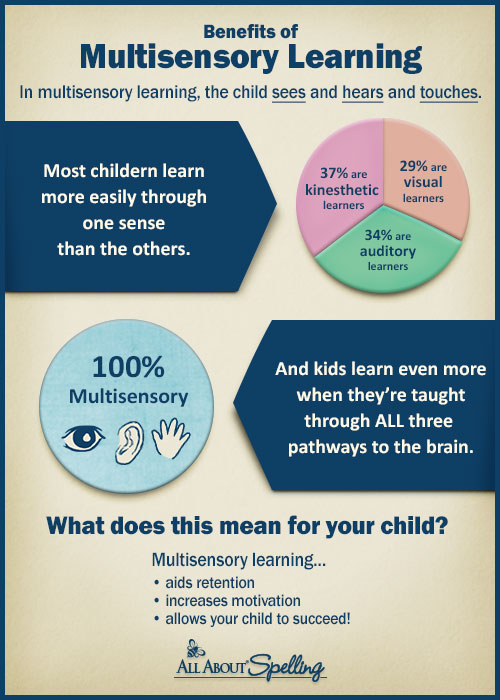Multisensory Instruction : Does it work for everyone?
WHAT does the RESEARCH say about multisensory instruction?
A multisensory instruction study by M. Martini revealed that “all students had significantly better achievements with multisensory approaches than with either auditory or visual approaches,” (Farkus, 2003).
In her learning styles, multisensory study, Rhonda Farkus states, “The power of evidence supporting the benefits of learning-style methodology is compelling,” (Farkas, 2003).”Even the most cursory study of education demonstrates a profound understanding and appreciation of the world derives from a full sensory experience–smell, movement-touch, aural-musical, visual.
Relatively recent research in the field of multiple intelligence / emotional intelligence into how we learn, suggests that diversity of sensory and intellectual stimuli is key to increasing our capacity for learning,” (Westley, 2003).
All research shows multisensory instruction, in more than one learning style at a time, helps enhance learning. Kathleen Farmer says, “There are enormous differences in how people acquire, process, and represent knowledge, and education is more effective when differences are taken into account,” (Dalton & Farmer, 2002). It is also noted that “everyone has a dominant learning style,” (Maal, 2004).
Homeschooling parents have the luxury of being able to assess their child’s unique learning preferences, and to teach using multisensory instruction that meets their child’s needs. By teaching using multisensory instruction, a parent can create an optimal learning environment for any child.
So, what exactly is “multisensory instruction”? Move Forward to the next page throughout this tutorial to learn more about how to use multisensory instruction.
 |
 |
 |


